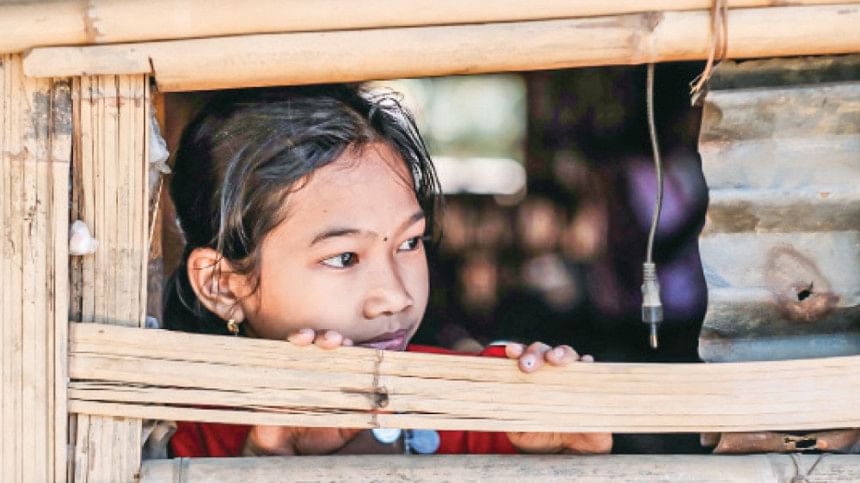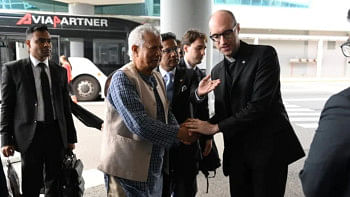First Mro-language film to be screened at Matribhasha Chalachitra Utsab

The first film in Mro language, "Klobong Mla" (Bangla title "Girikusum"), marks a significant milestone for Bangladesh's indigenous communities. While films have previously been made in Chakma and Marma languages, this is the first time the Mro language will feature on the big screen.
Directed by Pradip Ghosh, the 18-minute-long short film will be screened on February 23 at the Matribhasha Chalachitra Utsab 2025 (Mother Language Film Festival) in the capital's Dhanmondi area. The film captures the Mro people's struggles, familial ties, and cultural identity, offering a rare insight into one of the country's lesser-known indigenous communities.

Produced by veteran Dr Mong Usha Thoyai, a longstanding advocate for promoting indigenous languages and cultures through cinema, "Klobong Mla" is a vital cultural achievement for the Mro people. Thoyai, who previously produced the Marma-language film "Girikannya", said his mission is to represent all 11 indigenous communities of the Chittagong Hill Tracts through film. "Every community has its own language and script," he said. "I want to showcase these cultures through cinema."
The story of "Klobong Mla" revolves around a young girl named Klobong. After losing her parents to cholera, her older brother raises her with care, though he often becomes busy with his work in the jhum fields. When he gets married, Klobong faces cruelty at the hands of her new sister-in-law. The film portrays the struggles of Klobong's life and the bond between a brother and sister as it reaches its dramatic conclusion.
Written by acclaimed Mro-language author and researcher Younguang Mro, the film is based on a popular folk tale within the Mro community. Younguang, widely regarded as the voice of the Mro people, has been at the forefront of preserving and promoting their language and culture. He authored the first Mro-language dictionary, the first grammar book, and the first published work in the Mro language. Now, his contributions have expanded into cinema.
"Mro history is ancient," Younguang explained, adding that their presence extends beyond Bangladesh to Myanmar and West Bengal, India, where they are also known as the Murong. "'Mro' means 'human,' and 'Murong' means 'human society.' Not much work has been done to preserve our history and traditions, but we're slowly making progress. This film is part of that journey," he said, expressing his gratitude to the entire production team for bringing the film to life.
Shot in the remote areas of Chimbuk and Ramri Para in Bandarban, the film brought together 15 members of the Mro community, most of whom had never acted before. The entire cast, including Younguang himself, made their acting debut through this project. The film vividly captures the Mro way of life, with Younguang serving not only as the scriptwriter but also as a key cultural guide throughout the filming process.
Director Pradip Ghosh emphasised the significance of Younguang's involvement in making the film authentic. "Without Younguang Mro, this film wouldn't have been possible to make. He translated our words into Mro and helped the cast understand their roles. His dedication to the project was invaluable," Ghosh said. Younguang also assisted in post-production work, ensuring that the Mro language and cultural elements remained accurate.
In addition to Mro, the film will feature subtitles in both Bangla and English, making it accessible to a wider audience. Ghosh, who has previously made films in the Marma language is currently working on a film in the Bom language.
Similarly, filmmaker Aung Rakhine began working on a Mro-language film titled "Mro" several years ago but has yet to complete it due to production difficulties. Rakhine, who previously gained recognition for his Chakma-language film "Mor Thengari", said, "I haven't been able to complete the film due to some complications. Hopefully, I'll release it by 2026."

 For all latest news, follow The Daily Star's Google News channel.
For all latest news, follow The Daily Star's Google News channel. 




Comments